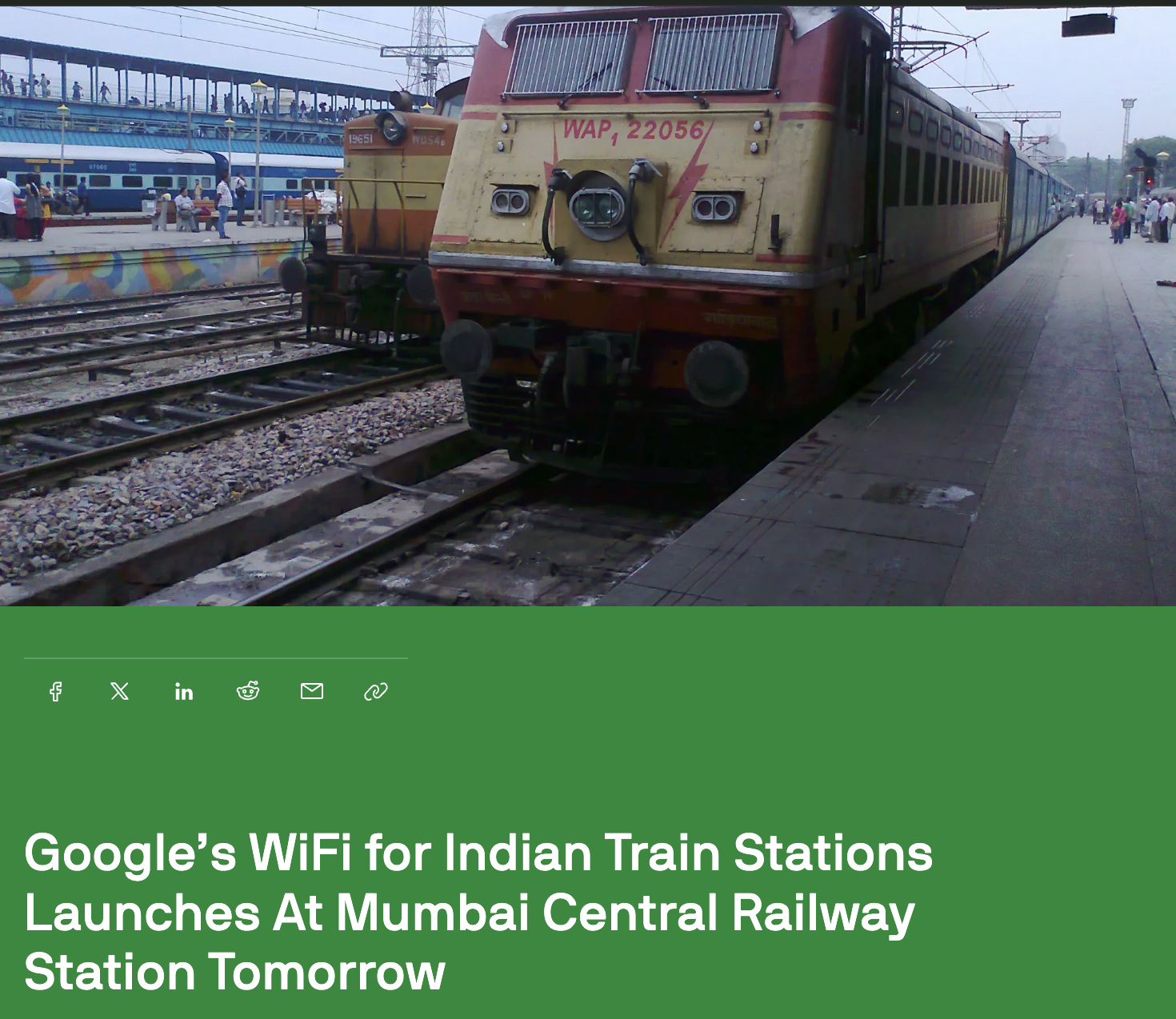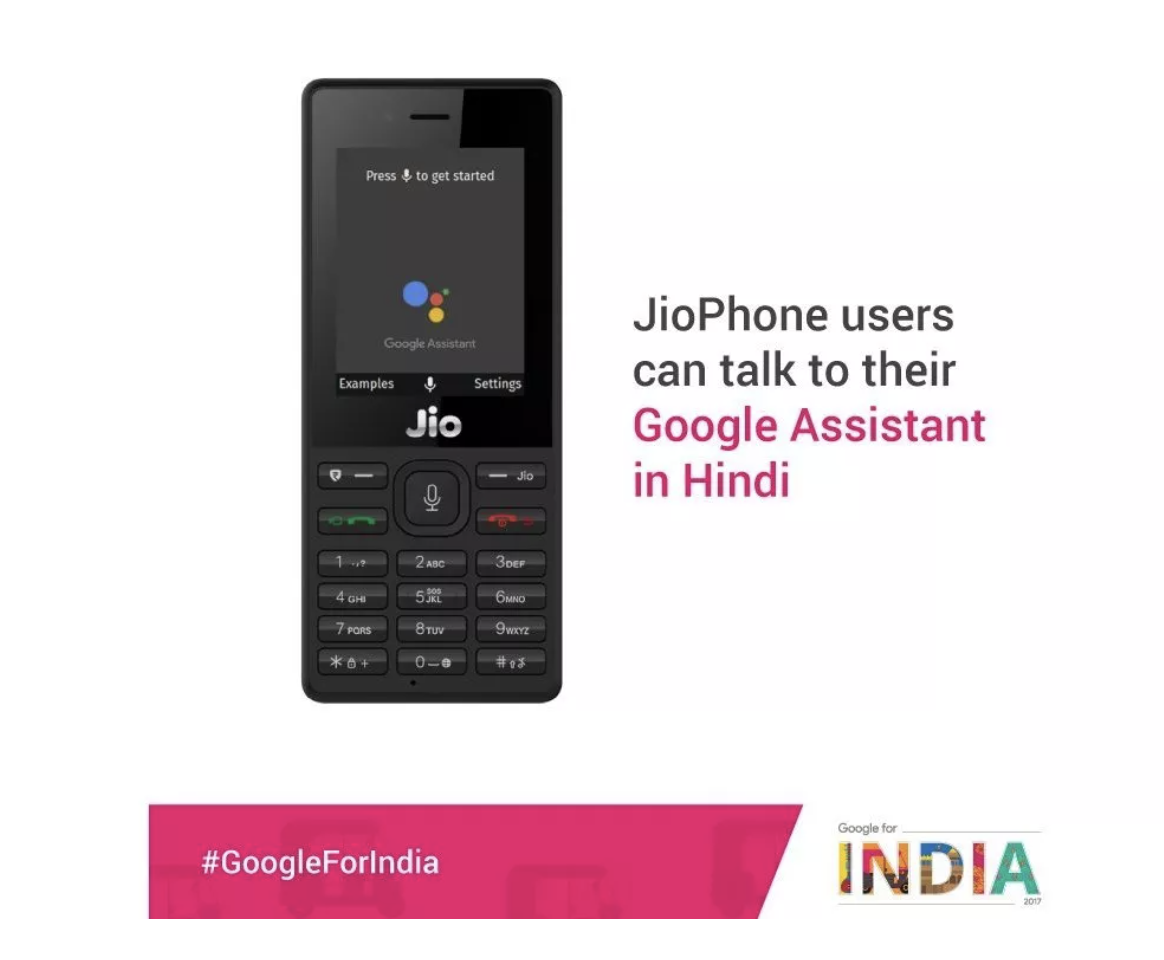
Google Connectivity Research Deep Dive
For years with the Google Access and Next Billion Users organizations, I led research for 0->1 products aiming to expand internet connectivity in emerging markets in the Global South.
While I conduct various other types of research and consulting work, I hope this case study shows the scope and challenge of my past work.
Note: I led work on several other products that remain confidential, and have redacted certain confidential details from these studies as well.
Explored new markets for a novel YouTube caching technology in the Philippines and other SE Asia markets.
Impact: Research discovered new market opportunities, and ensured user-centered design, for a “moonshot” technology.
Increased Google Station team’s understanding of Indian commuter needs when using public wifi. Image courtesy TechCrunch.
Impact: Research informed design and product opportunities that helped expand the service.
Led the first foundational pre-launch study of Google Assistant on the JioPhone, a low-end “feature phone” with T9 keyboard targeting low-income Indian users. Image courtesy Android Authority.
Impact: Research crucially shaped product strategy prior to launch.
Drove research — from pre-launch and through multiple pivots — for Datally, an app helping individuals save money in countries where mobile data is expensive. Image courtesy The Verge.
Impact: Research informed key feature launches and pivots across the entire product lifecycle.
Led a complex cross-team research effort to effectively introduce a novel icon for Android data connectivity, allowing Google Fi to more efficiently deliver mobile data. Image courtesy Chrome Unboxed.
Impact: Research led to signficant cost savings and team prioritization of a paradigm-shifting design that may eventually reach 1+ billion Android users around the globe.
Global Studies
To accomplish this work, I hired and oversaw moderators, recruiters, and translators all across the globe.
This was helpful both logistically and methodologically. By employing local experts, I helped ensure we asked the right questions of the right people in the right places.
Image courtesy GIPHY
Visiting the Field
I would frequently visit these places, partnering directly with local teams to ensure quality work.
Usually I’d aim to bring along a number of colleagues to learn from participants alongside me. Sometimes when starting on a new team, I would struggle to find colleagues willing to join research trips. But once they did, I’d soon have a waitlist of others hoping to come on the next.
This sounds expensive, but after the first day of one-such research study, a YouTube VP who’d joined said:
“What we learned today alone was worth the cost.”
Photo taken on a field visit to Bangalore, India to better understand the public wifi market.
Research Methodology
When conducting this work, I typically rely on these methods:
In-depth interviews
Short, informal “intercept” interviews
Observational methods on home, neighborhood, and business visits
Photographs and videos to bring findings and participant stories to life when returning to the office.
Photo from a visit to a mobile data shop in Thailand.
Unique Challenges
Working in these environments requires patience, perseverance, and innovative methods I frequently shared with — and which were often adopted by — teams across Google. Some of the unique challenges of this work include:
Recruiting participants who were primarily offline — and therefore difficult to identify and recruit.
Navigating complex partnerships with international telcos, government bodies, and local businesses.
Conveying participant hopes, needs, problems, and desires from field studies to engineers, product managers, and designers halfway across the world.
I’ve shared some of my strategies for overcoming this last challenge at conferences.
Photo of a Jeepney interior — with Viber hotline number — in the Philippines.
Thanks for reading about this work, comprising about five years of my time at Google.
If you have questions or think your organization might benefit from an approach like mine, please reach out.








